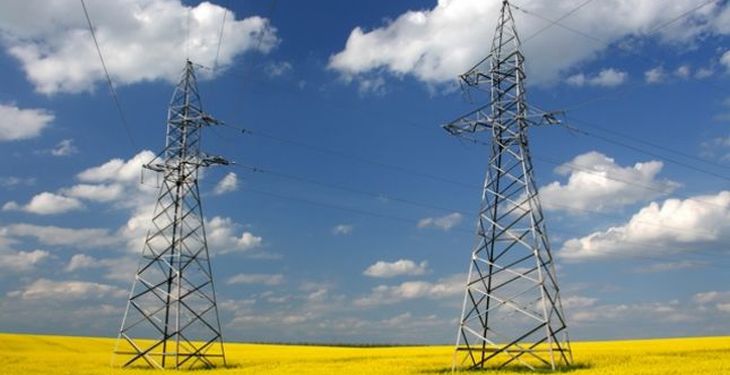Between 2010 and 2014, in the absence of proper monitoring of the market for green certificates, the impact of this kind of subsidy for renewable energy in the bill to final energy consumers increased by over 1,100%, a situation that led to incorrect additional gains by some producers and suppliers of energy shows a report of the Court of Auditors.
The irregularities observed by the Court of Auditors include marketing of green certificates over the established quota, the lack of adequacy of the rules for the sale of energy with the European directives and non-quantification of the gains from collecting subsidy through consumer bills.
Energy efficiency remains a hot topic, especially that the bonus for cogeneration, also charged by the operators, as a share of the bill for a final customer, has not been fully used for investment in effective cogeneration units, explained the Court of Auditors. The financial burden on energy users is not found in achieving new technical objectives, little interest of investment being expressed by the companies receiving those funds.
In the period under review, the Court of Auditors also found that losses in electricity transmission and distribution networks were, in average, 7.8 TWh per year, which generated costs for operators estimated at 1.8 billion euros, supported mostly by the final consumers. In parallel, the distribution tariff increases were not preceded by a high degree of refurbishment, says the institution.
“At the level of the main distribution operators, between 2010-2013, was recorded an alarming level of losses (CPT) in electricity distribution networks for 12.63% of electricity in distribution networks. From the assessment of the level of the own technical consumption (CPT), recorded in the electricity distribution networks in 2013 compared to 2004, it was revealed that while between 2009-2013 reports of the operators of distribution showed investments of 5.987,593 thousand lei (5.9 billion lei – no), of which, for the replacement of equipment in order to reduce CPT between 2010-2013 were carried out investments worth 717.526 lei (717 million lei – no), the investments were not acheived, the losses in the distribution networks in 2013 (12.4%) remained at the same level recorded in 2004 (12.6%),” said the report.
In the audited period, sales prices of electricity to final consumers increased by 33.32% (from 438.1 lei/MWh at 584.1 lei/MWh), for the household consumers and 21.7 % (from 396.88 lei/MWh to 482.63 lei/MWh) for non-household consumers, these increases being generated on the one hand by raising fees/contributions (green certificates, cogeneration, excise duty, VAT ) included in the selling price of electricity and on the other hand by the increase in prices for distribution and transmission.
In the first semester of 2014, the largest share in the average selling price of electricity for the final consumers is the network tariff (tariff for transmission and distribution), which represents 40.24% for the household consumers and for the non-household consumers 29.54%.
“Thus, in the first semester of 2014, the selling price of electricity to the household consumers was of 584.11 lei MWh, the electricity cost (the price of electricity sold by the energy producers) was 152.65 lei/MWh, representing 26.15% and the rest of 73.85% represents the remaining approximately tariffs for services (supply, distribution, transport, system, etc. – 44.4%%) and taxes / contributions (29.45%),” according to the Court of Auditors.
ANRE contests the accuracy of the data used by the Court of Auditors
The Court of Auditors used data on the electricity market from two different regulatory periods, the conclusions of the report being “not updated and not objective”, said the National Authority for Energy Regulation (ANRE).
“The Court of Auditors document represents an audit of performance, conducted on the electricity market as a whole and not a report of ANRE’s activity itself. The audit does not show updated and objective conclusions, given that the issues examined included mixed data from two different regulatory periods (the second and the third period). Thus, even before the commencement of audit by the Court of Auditors, ANRE has reviewed the costs of the second regulatory period (2008-2012).
As a result, the forecasting of the third regulatory period was performed to correct the issues raised in the second regulatory period, applying corrections for each type of cost covered. This has significantly reduced the costs recognized and the effect of these reconsiderations was the drastic reduction in distribution tariffs in the period 2015-2016, which led to the dissatisfaction of the distribution operators, who acted ANRE in justice. As a result, ANRE has currently 50 lawsuits with the distribution operators regarding the establishment of the distribution tariffs,” mentions a document issued by the authority.
“Given that the report contains only recommendations and not concrete measures enforceable, the document not being an administrative act, it cannot be challenged in court. The capitalization of the recorded matters in the audit report of the performance is done by issuing a letter containing the recommendations of the Court of Auditors to reduce costs, to increase resource efficiency and achieving the objectives set out in the program / project / process / activity or the audited entities”, mention the representatives of ANRE.
